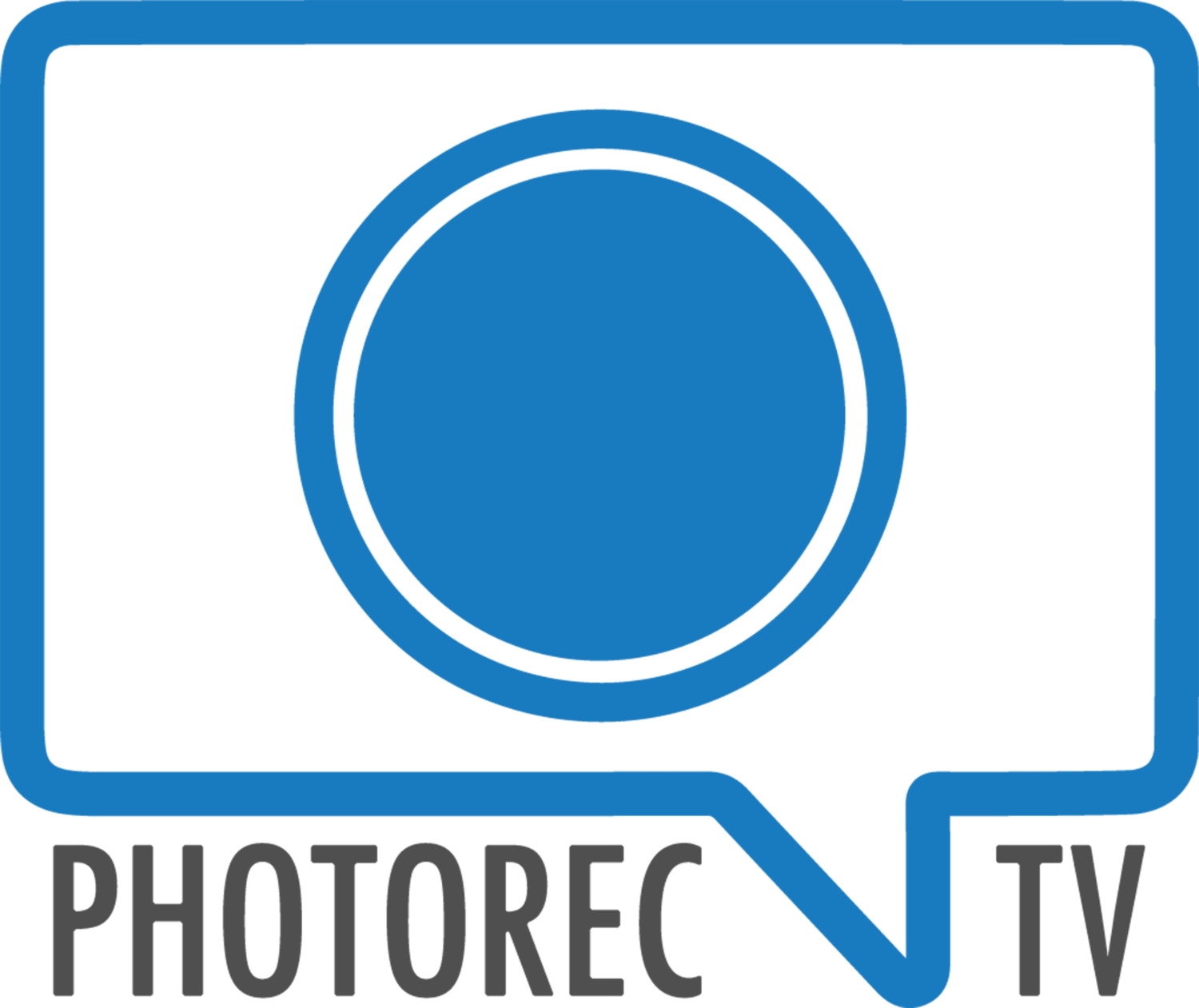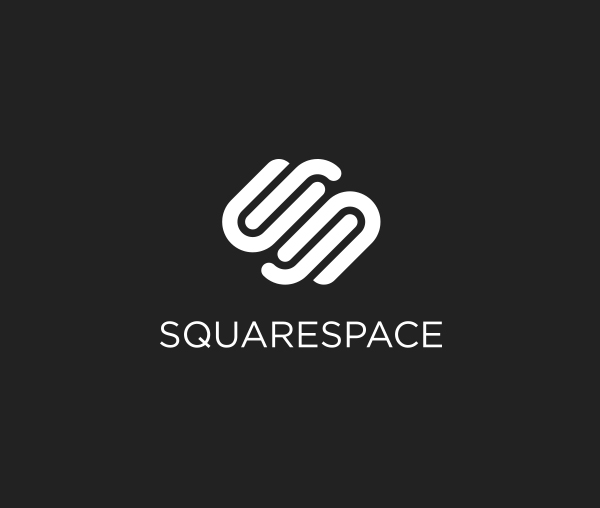Peak Design Everyday Backpack Review
/ I've had the 30L Peak Design Everyday Backpack for a while now going on photo hikes and using it for everyday work. It's a very dynamic bag for sure but is it the one for you? From a Kickstarter that raised millions to a standout brand, you can tell this gear is made by photographers for photographers. It takes a bit to get used to this open side design compared to other bags but it can be a great setup for the photographer on the go.
I've had the 30L Peak Design Everyday Backpack for a while now going on photo hikes and using it for everyday work. It's a very dynamic bag for sure but is it the one for you? From a Kickstarter that raised millions to a standout brand, you can tell this gear is made by photographers for photographers. It takes a bit to get used to this open side design compared to other bags but it can be a great setup for the photographer on the go.
Nice for Hiking
- Extra compression straps for carrying more gear, including a tripod or sleeping bag
- Can fit a DJI Phantom or Mavic easily
- Raised pads for the back to reduce pressure on the back and increase airflow
- Sternum and belly straps
- Waterproof design
- Good to use with the Peak Design Capture Clip
- Top and side handles for grab and go shooting
- More room for other gear, a coat, or food
Great for Everyday
- Sideload design makes it easy for quickly switching lenses.
- Carry-on compliant for air travel
- Luggage pass through to stack on top of a rolling suitcase
- Separate back pocket for a 15” laptop with extra storage for paper.
- Easy access anchor snap for keys or something else
- Theft prevention snaps that cinch down the zippers
- A safe pocket at the top to keep business cards, cash, or other important things safe.
 One of the most over-engineered bags out there, as the bag is essentially hollow, the key for the Peak Design Everyday Backpack is the special Flexfold Dividers that Velcro in to form cells to hold your gear. Compared to some bags as the zippers fully cover the bag you can get full access to all your gear simply swinging it around your shoulder. Albeit starting out you'll be trying to remember if a lens is on the left side or right when grabbing a lens. The Everyday Backpack is a well designed and thought out backpack that you'll notice a nice touch or feature days after owning the bag.
One of the most over-engineered bags out there, as the bag is essentially hollow, the key for the Peak Design Everyday Backpack is the special Flexfold Dividers that Velcro in to form cells to hold your gear. Compared to some bags as the zippers fully cover the bag you can get full access to all your gear simply swinging it around your shoulder. Albeit starting out you'll be trying to remember if a lens is on the left side or right when grabbing a lens. The Everyday Backpack is a well designed and thought out backpack that you'll notice a nice touch or feature days after owning the bag.
 Being an everyday bag it's a nice dynamic design for shelving when needed for just enough gear and leaving the rest as an open backpack. Each Flexfold divider acts as a shelf in the bag with a folding design to move out of the way for larger lenses or subdivide for smaller ones. Because they do not fully hit the sides like a traditional celled design at times that does mean small items such as a lens cap may float to the bottom. I do wish the 30L came with another divider, both the 20L and 30L come with 3 oddly despite it being bigger. After getting the backpack you can do their survey for $10 and pick one up for $5 with free shipping. All-in-all the Flexfold dividers are quite innovative, find out more in the tips & features video here.
Being an everyday bag it's a nice dynamic design for shelving when needed for just enough gear and leaving the rest as an open backpack. Each Flexfold divider acts as a shelf in the bag with a folding design to move out of the way for larger lenses or subdivide for smaller ones. Because they do not fully hit the sides like a traditional celled design at times that does mean small items such as a lens cap may float to the bottom. I do wish the 30L came with another divider, both the 20L and 30L come with 3 oddly despite it being bigger. After getting the backpack you can do their survey for $10 and pick one up for $5 with free shipping. All-in-all the Flexfold dividers are quite innovative, find out more in the tips & features video here. As a plus, lots of pockets! I'm usually one to push the Cocoon Grid-it as I can't find enough space in bags for the little things either shooting or working. Peak Design included side flaps with many small pockets, a small pouch on the top, and a safe pocket with a magnet for important items (great for business cards). If you need to store something larger though like a polarizer filter and keep it protected I'd suggest a field pouch or similar bag to help store the things that just don't quite fit. Larger items can be stored in the side areas while not in pockets as they stretch but without more padding, I wouldn't recommend this for fragile items like glasses but it's good for a something like a laptop charger.Thanks to the expanding design the 30L is large enough to load a DJI Phantom internally with extra space for a remote. As you fill the bag with something this large it expands to fit the need. Due to this design, the 20L is actually 12L, and the 30L a 18L bag initially. For those that pack light or have gone mirrorless, the 20L is a great fit. For those with multiple bodies or large lenses would be better off with the 30L. To get that extra space, as you raise the Maglatch top flap up brackets in the bag you gain another 8L at the cost of waterproofing at max size being more open. When hiking I managed to easily fit my duck coat in the top half of the bag this way. If you do somehow manage to max this out compression straps are hidden in the bottom and side pockets to hold a tripod or whatever gear you can't manage to stuff inside.[embed]https://www.youtube.com/watch?v=5X9x3Tehhiw[/embed]As an everyday bag, the laptop slot is nice as I can carry a notebook and slim laptop but the area collapses when not in use to not take up space. If you are using a full size 15" laptop it will be a snug fit, especially if the main compartment is full as it expands into that area. If you have to carry a lot of paper for work I wouldn't suggest this bag as it's too tight of a fit for much with the laptop included unless you want to sacrifice a divider space or two in the main area. As the dividers collapse down easily for every day I went with one section with a DSLR, zoom, and a 50mm STM lens with plenty of room for what I need to work on that day.[gallery td_select_gallery_slide="slide" ids="16633,16621,16620,16608,16612,16613,16614,16615,16617,16618,16622,16627,16628,16629,16630,16632"]As a note, it's something simple but if you want plain black it's actually coming soon. I've got their charcoal design to review here but if that's not your style, just recently Peak Design has started to come out with new black designs. As of this article, it hasn't gotten to the 30L yet but can be found in their 20L Everyday Backpack, Field Pouch, and a new 5L sling pouch announced today.Overall when compared to some of the more traditional designs of other bag companies the Everyday backpack certainly catches the eye in looks but is it a good camera bag? That depends a bit on you as there is never a perfect bag ( Toby has tons). The Everyday Backpack is good for quick access but it loses out to efficiency a bit. It is expensive though compared to competition such as Toby's favorite MindShift Gear bag for $40 less which may be more convenient for those that really have to pack a ton of gear. Overall it's quite comfortable and the swing design of the arm straps can angle to size the person while the ribbed back design keeps you cool. If you are looking for something different with a great design and everyday use this might be a great bag for you.Also, check out Peak Design’s new Give a Shot program aimed at connecting photographers with non-profit’s - giveashot.org
As a plus, lots of pockets! I'm usually one to push the Cocoon Grid-it as I can't find enough space in bags for the little things either shooting or working. Peak Design included side flaps with many small pockets, a small pouch on the top, and a safe pocket with a magnet for important items (great for business cards). If you need to store something larger though like a polarizer filter and keep it protected I'd suggest a field pouch or similar bag to help store the things that just don't quite fit. Larger items can be stored in the side areas while not in pockets as they stretch but without more padding, I wouldn't recommend this for fragile items like glasses but it's good for a something like a laptop charger.Thanks to the expanding design the 30L is large enough to load a DJI Phantom internally with extra space for a remote. As you fill the bag with something this large it expands to fit the need. Due to this design, the 20L is actually 12L, and the 30L a 18L bag initially. For those that pack light or have gone mirrorless, the 20L is a great fit. For those with multiple bodies or large lenses would be better off with the 30L. To get that extra space, as you raise the Maglatch top flap up brackets in the bag you gain another 8L at the cost of waterproofing at max size being more open. When hiking I managed to easily fit my duck coat in the top half of the bag this way. If you do somehow manage to max this out compression straps are hidden in the bottom and side pockets to hold a tripod or whatever gear you can't manage to stuff inside.[embed]https://www.youtube.com/watch?v=5X9x3Tehhiw[/embed]As an everyday bag, the laptop slot is nice as I can carry a notebook and slim laptop but the area collapses when not in use to not take up space. If you are using a full size 15" laptop it will be a snug fit, especially if the main compartment is full as it expands into that area. If you have to carry a lot of paper for work I wouldn't suggest this bag as it's too tight of a fit for much with the laptop included unless you want to sacrifice a divider space or two in the main area. As the dividers collapse down easily for every day I went with one section with a DSLR, zoom, and a 50mm STM lens with plenty of room for what I need to work on that day.[gallery td_select_gallery_slide="slide" ids="16633,16621,16620,16608,16612,16613,16614,16615,16617,16618,16622,16627,16628,16629,16630,16632"]As a note, it's something simple but if you want plain black it's actually coming soon. I've got their charcoal design to review here but if that's not your style, just recently Peak Design has started to come out with new black designs. As of this article, it hasn't gotten to the 30L yet but can be found in their 20L Everyday Backpack, Field Pouch, and a new 5L sling pouch announced today.Overall when compared to some of the more traditional designs of other bag companies the Everyday backpack certainly catches the eye in looks but is it a good camera bag? That depends a bit on you as there is never a perfect bag ( Toby has tons). The Everyday Backpack is good for quick access but it loses out to efficiency a bit. It is expensive though compared to competition such as Toby's favorite MindShift Gear bag for $40 less which may be more convenient for those that really have to pack a ton of gear. Overall it's quite comfortable and the swing design of the arm straps can angle to size the person while the ribbed back design keeps you cool. If you are looking for something different with a great design and everyday use this might be a great bag for you.Also, check out Peak Design’s new Give a Shot program aimed at connecting photographers with non-profit’s - giveashot.org
Buy the 30L
Buy the 20L
Specs
-
Materials
- Ultralight waxed Kodra synthetic canvas with DWR coating for weatherproofness, poly-spun mixed twill interior, compression-molded high-density EVA foam dividers and protective panels, die-cast and stamped anodized aluminum hardware with sandblasted finish and protective clear coat. Charcoal bags have Hypalon touchpoints, Ash bags have natural leather touchpoints.
-
Lifetime Warranty

30L Everyday Backpack

20L Everyday Backpack



























 Along with the Sony a7R III,
Along with the Sony a7R III, 




 You trade off some features for the smaller size of the Spark. While the Mavic is capable of 24 minutes flight time, closer to 30 with the new Platinum. The Spark offers just 16 minutes in ideal conditions and in flying both of these - I am almost always done with getting the shots I need with the Mavic and have plenty of battery left. With the Spark, it feels fairly urgent to get the shots I need in that shorter timeframe. The Mavic is faster and while you can switch the Spark into sports mode I have struggled to get very cinematic looking shots when it that mode, the Mavic in normal mode is fast enough and remains smoothly controllable. You also sacrifice range - the Mavic can be flown nearly 4 miles away, the Spark just over a mile when using the controllers for each- honestly here in the United States, you need to keep them both in sight at all times so the difference doesn’t bother me much. And it’s important to mention that the spark at $500 does not come with a controller - you control with the DJI app on your phone - that range is much more limited, just 100 meters and while the Mavic is capable of this too it’s really not something I recommend. The lack of tactile feedback and trying to keep your eyes on the drone plus the screen that your fingers are partially obscuring just make it awkward.
You trade off some features for the smaller size of the Spark. While the Mavic is capable of 24 minutes flight time, closer to 30 with the new Platinum. The Spark offers just 16 minutes in ideal conditions and in flying both of these - I am almost always done with getting the shots I need with the Mavic and have plenty of battery left. With the Spark, it feels fairly urgent to get the shots I need in that shorter timeframe. The Mavic is faster and while you can switch the Spark into sports mode I have struggled to get very cinematic looking shots when it that mode, the Mavic in normal mode is fast enough and remains smoothly controllable. You also sacrifice range - the Mavic can be flown nearly 4 miles away, the Spark just over a mile when using the controllers for each- honestly here in the United States, you need to keep them both in sight at all times so the difference doesn’t bother me much. And it’s important to mention that the spark at $500 does not come with a controller - you control with the DJI app on your phone - that range is much more limited, just 100 meters and while the Mavic is capable of this too it’s really not something I recommend. The lack of tactile feedback and trying to keep your eyes on the drone plus the screen that your fingers are partially obscuring just make it awkward. Difference in the external controllers too with the Mavic providing an LCD screen with some basic info (though everything important is also displayed through the app so you don’t really miss out on info but I find it nice to have my altitude and distance in a dedicated spot), you also have a 5 way configurable stick that is replaced by a simple button on the Spark controller and a few additional customizable buttons on the Mavic controller.
Difference in the external controllers too with the Mavic providing an LCD screen with some basic info (though everything important is also displayed through the app so you don’t really miss out on info but I find it nice to have my altitude and distance in a dedicated spot), you also have a 5 way configurable stick that is replaced by a simple button on the Spark controller and a few additional customizable buttons on the Mavic controller. But of course the Spark can be flown without any controller at all via gesture mode and not something available on the Mavic - it feels a bit gimmicky and at times I struggled to get it to do much other than take off and land on my palm but when it works it is fun to use and certainly impresses your friends.
But of course the Spark can be flown without any controller at all via gesture mode and not something available on the Mavic - it feels a bit gimmicky and at times I struggled to get it to do much other than take off and land on my palm but when it works it is fun to use and certainly impresses your friends. Both cameras share the same sensor though the mavic is capable of shooting RAW stills that gives you more editing capabilities, offers a slightly wider fixed aperture f/2.2 vs f/2.6 in the spark and, shooting 4k video with 3 axis gimbal support vs just 1080 and 2 axis gimbal in the Spark at a lower bit rate. I my testing I certainly see an advantage with the Mavic in stills and video quality, especially in lower light. The spark isn’t bad - it just feels a touch behind what the Mavic provides in quality. I haven’t really noticed a difference between the 2 axis and 3 axis gimbals - the spark video looks just as stable smooth.
Both cameras share the same sensor though the mavic is capable of shooting RAW stills that gives you more editing capabilities, offers a slightly wider fixed aperture f/2.2 vs f/2.6 in the spark and, shooting 4k video with 3 axis gimbal support vs just 1080 and 2 axis gimbal in the Spark at a lower bit rate. I my testing I certainly see an advantage with the Mavic in stills and video quality, especially in lower light. The spark isn’t bad - it just feels a touch behind what the Mavic provides in quality. I haven’t really noticed a difference between the 2 axis and 3 axis gimbals - the spark video looks just as stable smooth. You do see a noticeable difference in control options for both photos and video in the app - Not only does the Mavic provide the RAW shooting you have color profiles for video and you can customize the speed of the gimbal for very controlled, cinematic looking shots - not possible on the Spark.
You do see a noticeable difference in control options for both photos and video in the app - Not only does the Mavic provide the RAW shooting you have color profiles for video and you can customize the speed of the gimbal for very controlled, cinematic looking shots - not possible on the Spark. The Spark is cheaper, lighter, smaller and in some ways more fun to fly but does not provide 4k and its image quality/video quality is decent but not quite as good as the Mavic.The Mavic costs more but offers image and video quality that I love using in my travel videos along with the extended flight time and faster speed while remaining cinematic and still being portable enough to bring along just about everywhere.I think the Spark makes a great first drone but the Mavic has those additional advantages that make it worthwhile for the serious content creators that need to travel.I recommend the Fly More Combo for both drones - the extra batteries are useful and having the multi-charger for both drones makes a big difference in how quickly you can get flying again. I recommend buying from B&H Photo - no sales tax outside of NY state.
The Spark is cheaper, lighter, smaller and in some ways more fun to fly but does not provide 4k and its image quality/video quality is decent but not quite as good as the Mavic.The Mavic costs more but offers image and video quality that I love using in my travel videos along with the extended flight time and faster speed while remaining cinematic and still being portable enough to bring along just about everywhere.I think the Spark makes a great first drone but the Mavic has those additional advantages that make it worthwhile for the serious content creators that need to travel.I recommend the Fly More Combo for both drones - the extra batteries are useful and having the multi-charger for both drones makes a big difference in how quickly you can get flying again. I recommend buying from B&H Photo - no sales tax outside of NY state.



 Shop all the DJI Spark colors at B&H Photo
Shop all the DJI Spark colors at B&H Photo







 While it can produce professional results the lack of 4k, 16 minute flight time and probable issues in wind make this less ideal for serious aerial photo or video needs. Those that desire a more versatile drone need to consider the Mavic Pro or a higher model.$499 will get you the drone and one battery. You can charge the drone via Micro USB(a first for DJI). Control with hand gestures or the DJI app on your smartphone - range is limited to approximately 100 meters.$699 for the Fly more combo which includes - extra props, prop guards, 1 extra battery (2 total), a remote and a carry case. The remote extends the range to 1.24 miles and while the remote is similar to the DJI Mavic it is much simpler without the LCD Screen.Shipping June 21st - Preorder from
While it can produce professional results the lack of 4k, 16 minute flight time and probable issues in wind make this less ideal for serious aerial photo or video needs. Those that desire a more versatile drone need to consider the Mavic Pro or a higher model.$499 will get you the drone and one battery. You can charge the drone via Micro USB(a first for DJI). Control with hand gestures or the DJI app on your smartphone - range is limited to approximately 100 meters.$699 for the Fly more combo which includes - extra props, prop guards, 1 extra battery (2 total), a remote and a carry case. The remote extends the range to 1.24 miles and while the remote is similar to the DJI Mavic it is much simpler without the LCD Screen.Shipping June 21st - Preorder from 
 [/vc_column][vc_column width="1/4"]
[/vc_column][vc_column width="1/4"] [/vc_column][/vc_row][vc_row][vc_column width="1/4"]Size[/vc_column][vc_column width="1/4"]335mm (Extended) 83mm x 83mm x 198mm (Folded)[/vc_column][vc_column width="1/4"]350mm[/vc_column][vc_column width="1/4"]143×143×55 mm[/vc_column][/vc_row][vc_row][vc_column width="1/4"]Weight[/vc_column][vc_column width="1/4"]1.64 lbs (743g)[/vc_column][vc_column width="1/4"]3.04 lbs (1380g)[/vc_column][vc_column width="1/4"].66lbs (300 g)[/vc_column][/vc_row][vc_row][vc_column width="1/4"]Operating Temp[/vc_column][vc_column width="1/4"]32° to 104° F ( 0° to 40° C )[/vc_column][vc_column width="1/4"] 32° to 104°F (0° to 40°C)[/vc_column][vc_column width="1/4"]32° to 104° F (0° to 40° C)[/vc_column][/vc_row][vc_row][vc_column width="1/4"]Max Ascent /Descent Speed[/vc_column][vc_column width="1/4"]16.4 ft/s | 9.8 ft/s[/vc_column][vc_column width="1/4"]19.7 ft/s | 13.1 ft/s[/vc_column][vc_column width="1/4"] 9.8 ft/s (3 m/s) | 9.8 ft/s (3 m/s)[/vc_column][/vc_row][vc_row][vc_column width="1/4"]Max Flight Time[/vc_column][vc_column width="1/4"]27 Minutes[/vc_column][vc_column width="1/4"]28 Minutes[/vc_column][vc_column width="1/4"]16 Minutes[/vc_column][/vc_row][vc_row][vc_column width="1/4"]Max Flight Distance[/vc_column][vc_column width="1/4"]8 mi (13 km)[/vc_column][vc_column width="1/4"]-[/vc_column][vc_column width="1/4"]-[/vc_column][/vc_row][vc_row][vc_column width="1/4"]Max Tilt Angle[/vc_column][vc_column width="1/4"]-[/vc_column][vc_column width="1/4"]S-mode: 42°A-mode: 35°P-mode: 15°[/vc_column][vc_column width="1/4"]-[/vc_column][/vc_row][vc_row][vc_column width="1/4"]Max Angular Speed[/vc_column][vc_column width="1/4"]-[/vc_column][vc_column width="1/4"]S-mode: 200°/sA-mode: 150°/s[/vc_column][vc_column width="1/4"]-[/vc_column][/vc_row][vc_row][vc_column width="1/4"]Max Wind Speed Resistance[/vc_column][vc_column width="1/4"]-[/vc_column][vc_column width="1/4"]10 m/s[/vc_column][vc_column width="1/4"]-[/vc_column][/vc_row][vc_row][vc_column width="1/4"]Sensor[/vc_column][vc_column width="1/4"]1/2.3” (CMOS), Effective pixels:12.35 MP[/vc_column][vc_column width="1/4"]1/2.3” CMOS, Effective pixels:12.4 MP[/vc_column][vc_column width="1/4"]1/2.3" CMOSEffective pixels: 12 MP[/vc_column][/vc_row][vc_row][vc_column width="1/4"]Lens[/vc_column][vc_column width="1/4"]FOV 78.8° 28 mm (35 mm format equivalent) f/2.2Distortion < 1.5% Focus from 0.5 m to ∞[/vc_column][vc_column width="1/4"]FOV 94° 20 mm (35 mm format equivalent) f/2.8 focus at ∞[/vc_column][vc_column width="1/4"]FOV 81.9° 25 mm (35 mm format equivalent) f/2.6(shooting range: 2 m to ∞)[/vc_column][/vc_row][vc_row][vc_column width="1/4"]Gimbal[/vc_column][vc_column width="1/4"]3-Axis[/vc_column][vc_column width="1/4"]3-Axis[/vc_column][vc_column width="1/4"]2-Axis[/vc_column][/vc_row][vc_row][vc_column width="1/4"]ISO Range[/vc_column][vc_column width="1/4"]100-3200 (video)100-1600 (photo)[/vc_column][vc_column width="1/4"]100-3200 (video)100-1600 (photo)[/vc_column][vc_column width="1/4"]Video: 100-3200Photo: 100-1600[/vc_column][/vc_row][vc_row][vc_column width="1/4"]Shutter Speed[/vc_column][vc_column width="1/4"]8s -1/8000s[/vc_column][vc_column width="1/4"]8 - 1/8000 s[/vc_column][vc_column width="1/4"]2-1/8000 s[/vc_column][/vc_row][vc_row][vc_column width="1/4"]Image Size[/vc_column][vc_column width="1/4"]4000×3000[/vc_column][vc_column width="1/4"]4000×3000[/vc_column][vc_column width="1/4"]3968×2976[/vc_column][/vc_row][vc_row][vc_column width="1/4"]Still Photography Modes[/vc_column][vc_column width="1/4"]Single shotBurst shooting: 3/5/7 framesAuto Exposure Bracketing (AEB): 3/5 bracketed frames at 0.7 EV BiasInterval[/vc_column][vc_column width="1/4"]Single shotBurst shooting: 3/5/7 framesAuto Exposure Bracketing (AEB): 3/5 bracketed frames at 0.7 EV BiasTimelapseHDR[/vc_column][vc_column width="1/4"]Single ShotBurst Shooting: 3 framesAuto Exposure Bracketing (AEB): 3 bracketed frames at 0.7 EV biasInterval: 2/3/5/7/10/15/20/30/60 s[/vc_column][/vc_row][vc_row][vc_column width="1/4"]Video Recording Modes[/vc_column][vc_column width="1/4"]C4K: 4096×2160 24p4K: 3840×2160 24/25/30p2.7K: 2720x1530 24/25/30pFHD: 1920×1080 24/25/30/48/50/60/96pHD: 1280×720 24/25/30/48/50/60/120p[/vc_column][vc_column width="1/4"]UHD: 4096×2160 (4K) 24 / 25p3840×2160 (4K) 24 / 25 / 30p2704×1520 (2.7K) 24 / 25 / 30pFHD: 1920×1080 24 / 25 / 30 / 48 / 50 / 60 / 120pHD: 1280×720 24 / 25 / 30 / 48 / 50 / 60p[/vc_column][vc_column width="1/4"]-[/vc_column][/vc_row][vc_row][vc_column width="1/4"]Max Video Bitrate[/vc_column][vc_column width="1/4"] 60 Mbps[/vc_column][vc_column width="1/4"] 60 Mbps[/vc_column][vc_column width="1/4"]24 Mbps[/vc_column][/vc_row][vc_row][vc_column width="1/4"]Supported File Systems[/vc_column][vc_column width="1/4"]FAT32 ( ≤ 32 GB ); exFAT ( > 32 GB )[/vc_column][vc_column width="1/4"]FAT32 ( ≤ 32 GB ); exFAT ( > 32 GB )[/vc_column][vc_column width="1/4"]FAT32 (≤ 32 GB)[/vc_column][/vc_row][vc_row][vc_column width="1/4"]Photo[/vc_column][vc_column width="1/4"]JPEG, DNG[/vc_column][vc_column width="1/4"]JPEG, DNG[/vc_column][vc_column width="1/4"]JPEG[/vc_column][/vc_row][vc_row][vc_column width="1/4"]Video[/vc_column][vc_column width="1/4"]MP4, MOV (MPEG-4 AVC/H.264)[/vc_column][vc_column width="1/4"] MP4, MOV (MPEG-4 AVC/H.264)[/vc_column][vc_column width="1/4"]MP4 (MPEG-4 AVC/H.264)[/vc_column][/vc_row][vc_row][vc_column width="1/4"]Supported SD Cards[/vc_column][vc_column width="1/4"] Micro SDMax capacity: 64 GB. Class 10 or UHS-1 rating required[/vc_column][vc_column width="1/4"]Micro SDMax capacity: 64 GBClass 10 or UHS-1 rating required[/vc_column][vc_column width="1/4"]Micro SDMax capacity: 64 GBClass 10 or UHS-1 rating required[/vc_column][/vc_row][vc_row][vc_column width="1/4"]Buy it Today![/vc_column][vc_column width="1/4"]
[/vc_column][/vc_row][vc_row][vc_column width="1/4"]Size[/vc_column][vc_column width="1/4"]335mm (Extended) 83mm x 83mm x 198mm (Folded)[/vc_column][vc_column width="1/4"]350mm[/vc_column][vc_column width="1/4"]143×143×55 mm[/vc_column][/vc_row][vc_row][vc_column width="1/4"]Weight[/vc_column][vc_column width="1/4"]1.64 lbs (743g)[/vc_column][vc_column width="1/4"]3.04 lbs (1380g)[/vc_column][vc_column width="1/4"].66lbs (300 g)[/vc_column][/vc_row][vc_row][vc_column width="1/4"]Operating Temp[/vc_column][vc_column width="1/4"]32° to 104° F ( 0° to 40° C )[/vc_column][vc_column width="1/4"] 32° to 104°F (0° to 40°C)[/vc_column][vc_column width="1/4"]32° to 104° F (0° to 40° C)[/vc_column][/vc_row][vc_row][vc_column width="1/4"]Max Ascent /Descent Speed[/vc_column][vc_column width="1/4"]16.4 ft/s | 9.8 ft/s[/vc_column][vc_column width="1/4"]19.7 ft/s | 13.1 ft/s[/vc_column][vc_column width="1/4"] 9.8 ft/s (3 m/s) | 9.8 ft/s (3 m/s)[/vc_column][/vc_row][vc_row][vc_column width="1/4"]Max Flight Time[/vc_column][vc_column width="1/4"]27 Minutes[/vc_column][vc_column width="1/4"]28 Minutes[/vc_column][vc_column width="1/4"]16 Minutes[/vc_column][/vc_row][vc_row][vc_column width="1/4"]Max Flight Distance[/vc_column][vc_column width="1/4"]8 mi (13 km)[/vc_column][vc_column width="1/4"]-[/vc_column][vc_column width="1/4"]-[/vc_column][/vc_row][vc_row][vc_column width="1/4"]Max Tilt Angle[/vc_column][vc_column width="1/4"]-[/vc_column][vc_column width="1/4"]S-mode: 42°A-mode: 35°P-mode: 15°[/vc_column][vc_column width="1/4"]-[/vc_column][/vc_row][vc_row][vc_column width="1/4"]Max Angular Speed[/vc_column][vc_column width="1/4"]-[/vc_column][vc_column width="1/4"]S-mode: 200°/sA-mode: 150°/s[/vc_column][vc_column width="1/4"]-[/vc_column][/vc_row][vc_row][vc_column width="1/4"]Max Wind Speed Resistance[/vc_column][vc_column width="1/4"]-[/vc_column][vc_column width="1/4"]10 m/s[/vc_column][vc_column width="1/4"]-[/vc_column][/vc_row][vc_row][vc_column width="1/4"]Sensor[/vc_column][vc_column width="1/4"]1/2.3” (CMOS), Effective pixels:12.35 MP[/vc_column][vc_column width="1/4"]1/2.3” CMOS, Effective pixels:12.4 MP[/vc_column][vc_column width="1/4"]1/2.3" CMOSEffective pixels: 12 MP[/vc_column][/vc_row][vc_row][vc_column width="1/4"]Lens[/vc_column][vc_column width="1/4"]FOV 78.8° 28 mm (35 mm format equivalent) f/2.2Distortion < 1.5% Focus from 0.5 m to ∞[/vc_column][vc_column width="1/4"]FOV 94° 20 mm (35 mm format equivalent) f/2.8 focus at ∞[/vc_column][vc_column width="1/4"]FOV 81.9° 25 mm (35 mm format equivalent) f/2.6(shooting range: 2 m to ∞)[/vc_column][/vc_row][vc_row][vc_column width="1/4"]Gimbal[/vc_column][vc_column width="1/4"]3-Axis[/vc_column][vc_column width="1/4"]3-Axis[/vc_column][vc_column width="1/4"]2-Axis[/vc_column][/vc_row][vc_row][vc_column width="1/4"]ISO Range[/vc_column][vc_column width="1/4"]100-3200 (video)100-1600 (photo)[/vc_column][vc_column width="1/4"]100-3200 (video)100-1600 (photo)[/vc_column][vc_column width="1/4"]Video: 100-3200Photo: 100-1600[/vc_column][/vc_row][vc_row][vc_column width="1/4"]Shutter Speed[/vc_column][vc_column width="1/4"]8s -1/8000s[/vc_column][vc_column width="1/4"]8 - 1/8000 s[/vc_column][vc_column width="1/4"]2-1/8000 s[/vc_column][/vc_row][vc_row][vc_column width="1/4"]Image Size[/vc_column][vc_column width="1/4"]4000×3000[/vc_column][vc_column width="1/4"]4000×3000[/vc_column][vc_column width="1/4"]3968×2976[/vc_column][/vc_row][vc_row][vc_column width="1/4"]Still Photography Modes[/vc_column][vc_column width="1/4"]Single shotBurst shooting: 3/5/7 framesAuto Exposure Bracketing (AEB): 3/5 bracketed frames at 0.7 EV BiasInterval[/vc_column][vc_column width="1/4"]Single shotBurst shooting: 3/5/7 framesAuto Exposure Bracketing (AEB): 3/5 bracketed frames at 0.7 EV BiasTimelapseHDR[/vc_column][vc_column width="1/4"]Single ShotBurst Shooting: 3 framesAuto Exposure Bracketing (AEB): 3 bracketed frames at 0.7 EV biasInterval: 2/3/5/7/10/15/20/30/60 s[/vc_column][/vc_row][vc_row][vc_column width="1/4"]Video Recording Modes[/vc_column][vc_column width="1/4"]C4K: 4096×2160 24p4K: 3840×2160 24/25/30p2.7K: 2720x1530 24/25/30pFHD: 1920×1080 24/25/30/48/50/60/96pHD: 1280×720 24/25/30/48/50/60/120p[/vc_column][vc_column width="1/4"]UHD: 4096×2160 (4K) 24 / 25p3840×2160 (4K) 24 / 25 / 30p2704×1520 (2.7K) 24 / 25 / 30pFHD: 1920×1080 24 / 25 / 30 / 48 / 50 / 60 / 120pHD: 1280×720 24 / 25 / 30 / 48 / 50 / 60p[/vc_column][vc_column width="1/4"]-[/vc_column][/vc_row][vc_row][vc_column width="1/4"]Max Video Bitrate[/vc_column][vc_column width="1/4"] 60 Mbps[/vc_column][vc_column width="1/4"] 60 Mbps[/vc_column][vc_column width="1/4"]24 Mbps[/vc_column][/vc_row][vc_row][vc_column width="1/4"]Supported File Systems[/vc_column][vc_column width="1/4"]FAT32 ( ≤ 32 GB ); exFAT ( > 32 GB )[/vc_column][vc_column width="1/4"]FAT32 ( ≤ 32 GB ); exFAT ( > 32 GB )[/vc_column][vc_column width="1/4"]FAT32 (≤ 32 GB)[/vc_column][/vc_row][vc_row][vc_column width="1/4"]Photo[/vc_column][vc_column width="1/4"]JPEG, DNG[/vc_column][vc_column width="1/4"]JPEG, DNG[/vc_column][vc_column width="1/4"]JPEG[/vc_column][/vc_row][vc_row][vc_column width="1/4"]Video[/vc_column][vc_column width="1/4"]MP4, MOV (MPEG-4 AVC/H.264)[/vc_column][vc_column width="1/4"] MP4, MOV (MPEG-4 AVC/H.264)[/vc_column][vc_column width="1/4"]MP4 (MPEG-4 AVC/H.264)[/vc_column][/vc_row][vc_row][vc_column width="1/4"]Supported SD Cards[/vc_column][vc_column width="1/4"] Micro SDMax capacity: 64 GB. Class 10 or UHS-1 rating required[/vc_column][vc_column width="1/4"]Micro SDMax capacity: 64 GBClass 10 or UHS-1 rating required[/vc_column][vc_column width="1/4"]Micro SDMax capacity: 64 GBClass 10 or UHS-1 rating required[/vc_column][/vc_row][vc_row][vc_column width="1/4"]Buy it Today![/vc_column][vc_column width="1/4"]










 [/vc_column][vc_column width="3/4"]
[/vc_column][vc_column width="3/4"]









